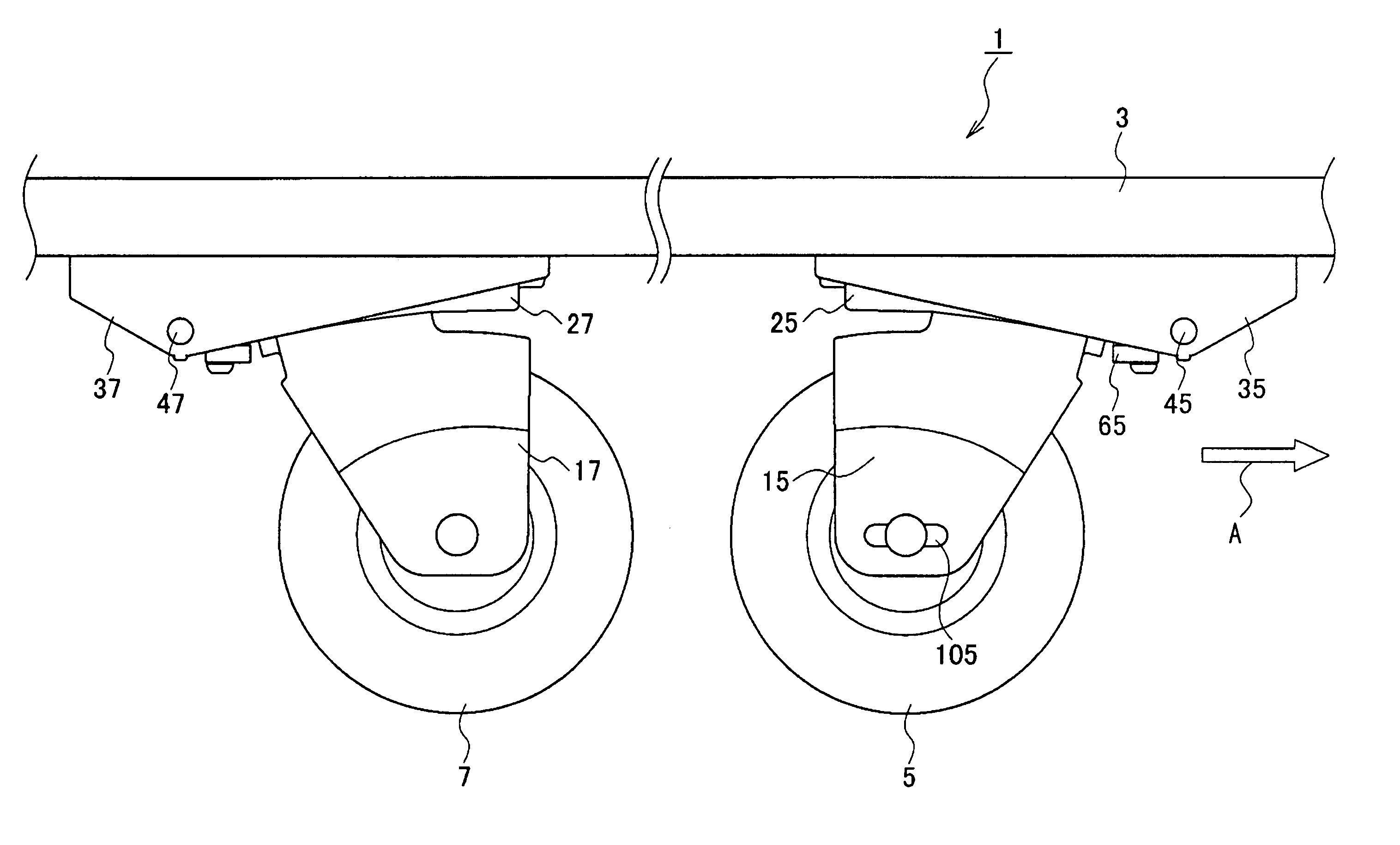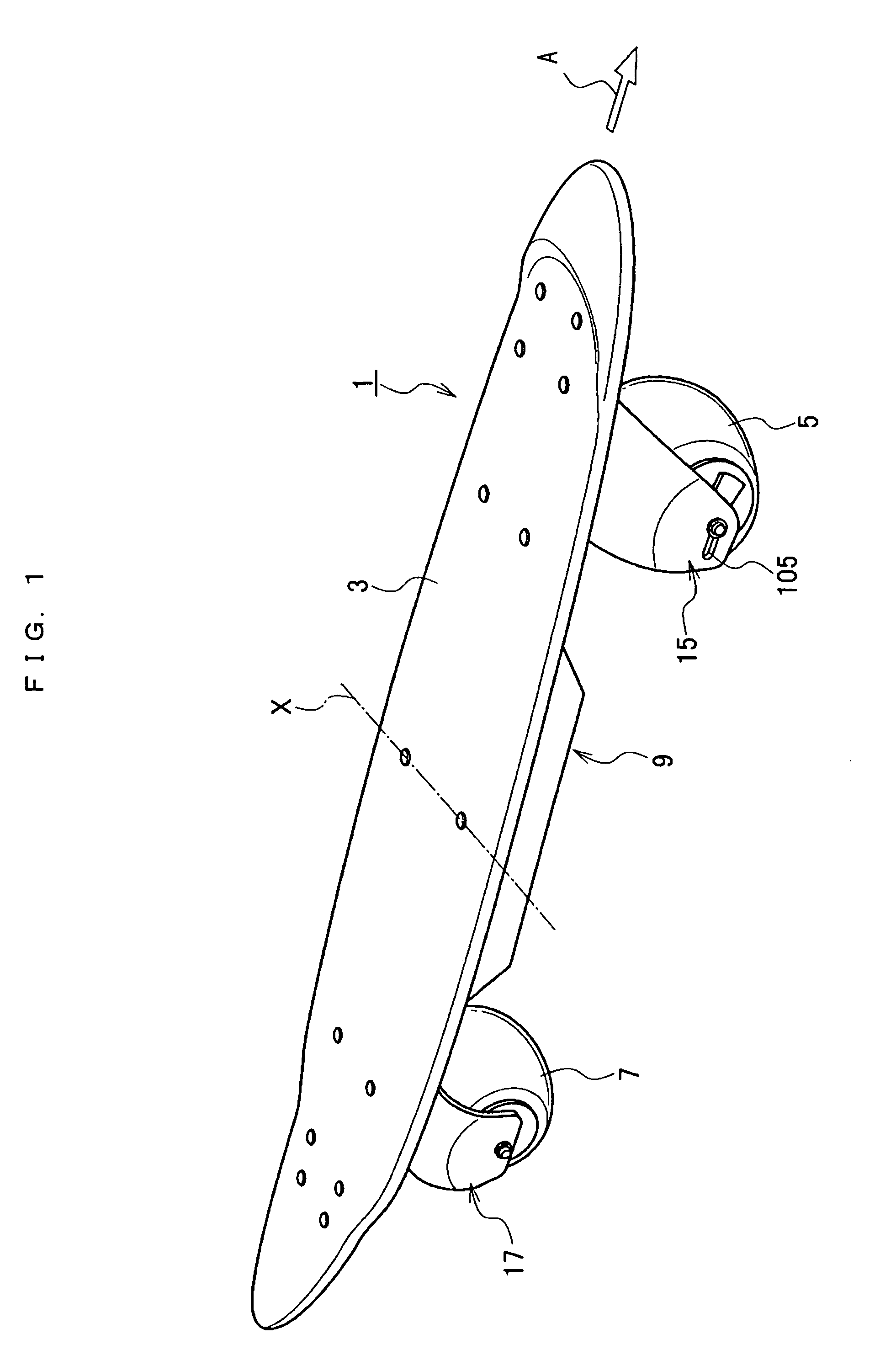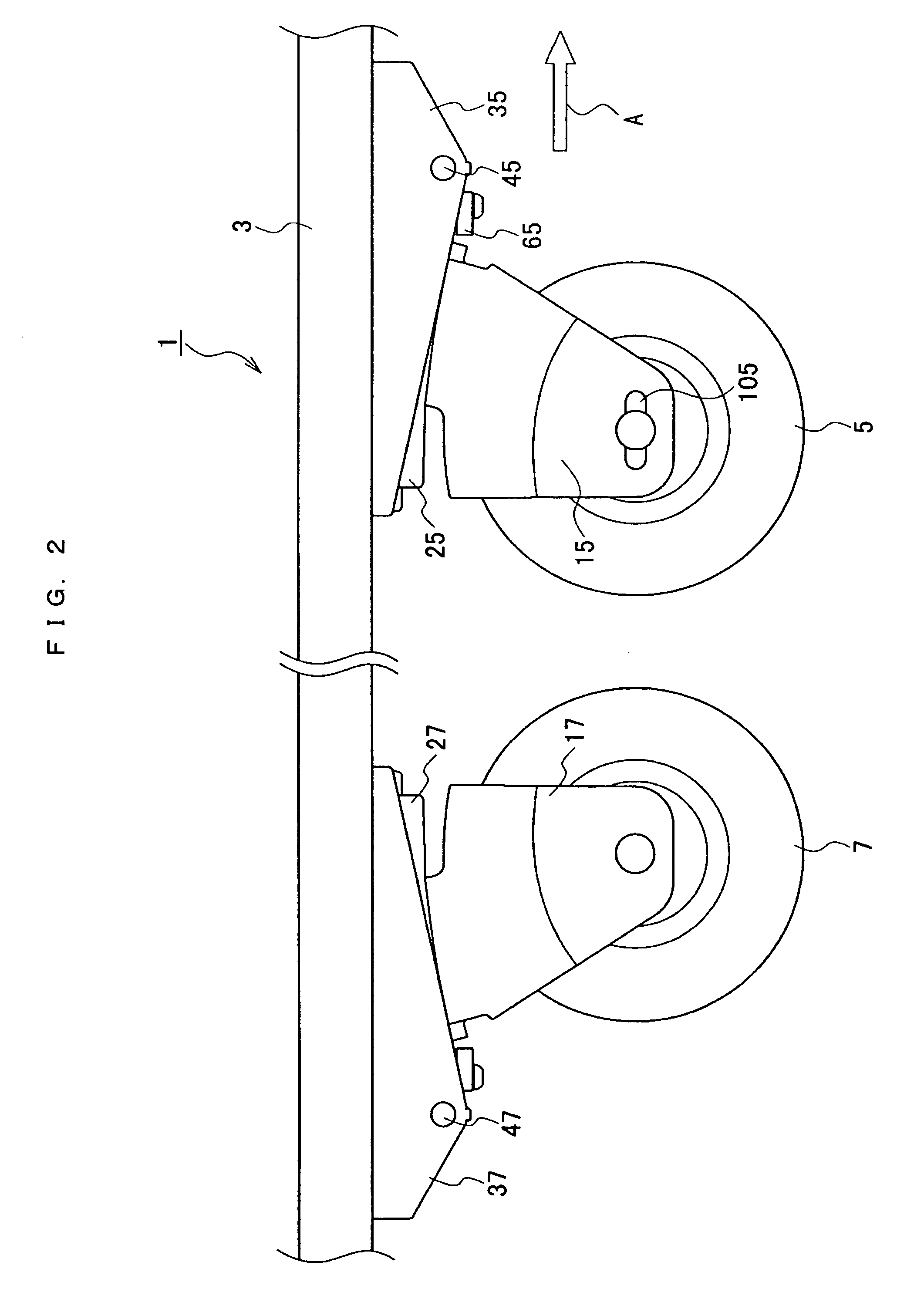Vehicle
a technology for vehicles and vehicles, applied in the field of vehicles, can solve the problems of rider preoccupation, complex operation, and vehicle position, and achieve the effect of good operability
- Summary
- Abstract
- Description
- Claims
- Application Information
AI Technical Summary
Benefits of technology
Problems solved by technology
Method used
Image
Examples
Embodiment Construction
[0032]Hereinafter, preferred embodiments of the present invention will be described with reference to the drawings.
[0033]FIG. 1 shows an electric skateboard 1 as a vehicle according to a preferred embodiment of the present invention.
[0034]In the following description, front, rear, right and left directions in the electric skateboard 1 are determined on the basis that a front wheel 5 is on the front side, which means that the direction indicated by Arrow A in FIG. 1 is the forward traveling direction. Upper and lower directions are determined from a driving state of the electric skateboard 1. In other words, upper and lower directions are determined on the basis of a state that the front wheel 5 and a rear wheel 7 are below a board 3.
[0035]Referring to FIG. 1, the electric skateboard 1 includes the board 3 serving as a load receiver which receives the load applied by the rider. The front wheel 5 and the rear wheel 7 are mounted on a lower surface of the board 3, on both longitudinal ...
PUM
 Login to View More
Login to View More Abstract
Description
Claims
Application Information
 Login to View More
Login to View More - R&D
- Intellectual Property
- Life Sciences
- Materials
- Tech Scout
- Unparalleled Data Quality
- Higher Quality Content
- 60% Fewer Hallucinations
Browse by: Latest US Patents, China's latest patents, Technical Efficacy Thesaurus, Application Domain, Technology Topic, Popular Technical Reports.
© 2025 PatSnap. All rights reserved.Legal|Privacy policy|Modern Slavery Act Transparency Statement|Sitemap|About US| Contact US: help@patsnap.com



